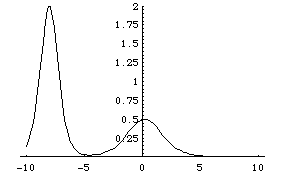
Die Theorie der linearen Gleichungen sagt voraus, dass sich Wellen im Laufe
der Zeit ausbreiten. Ein bemerkenswertes Phänomen
jedoch ist, dass unter Einfluß von nichtlinearen Effekten Wellen
erzeugt werden können, die sich dispersionsfrei fortbewegen, also
ihre Form nicht verändern. Solche Wellen heißen Solitonen.
So kann es vorkommen, das Wellen
(Tsunamis) zwei Ozeane
überqueren, ohne ihre Energie zu verlieren, und dann
zerstörerische Wirkung haben.
Dieses Seminar ist eine Einführung in die Theorie von Solitonen.
Anhand der Modellbeispiele: Korteweg-de Vries- und sinus-Gordon-Gleichungen
werden die Grundideen der Solitontheorie vorgestellt. Wir werden u.a.
die folgenden Themen erarbeiten: Nichtlinearität kontra Dispersion,
einfache Solitonlösungen, Bäcklund-Transformationen,
Lax-Paare, Inverse Streumethode.
Vorausgesetzt werden nur Mathematikkenntnisse im Rahmen der linearen Algebra
und elementaren Analysis. Das Seminar richtet sich an Studenten der Mathematik sowie Physik.
